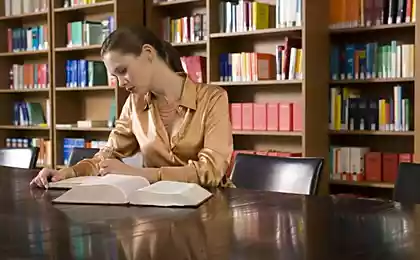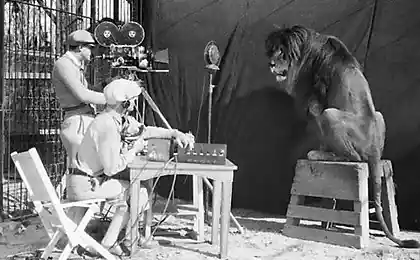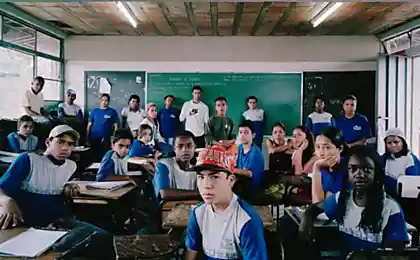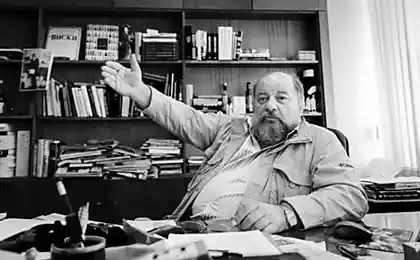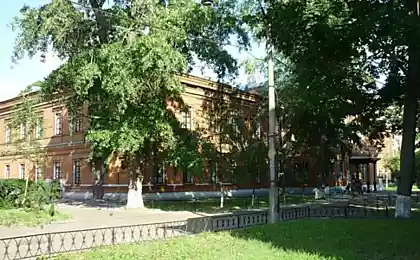562
The problem about the hat from Leo Tolstoy
Leo Tolstoy, known to have been not only "great Russian writer" but also a talented teacher. His approach was to the individual attitude to every student and the lack of traditional school discipline. In the Yasnaya Polyana school the children sat, and who wanted who wanted who wanted. The main task of the teacher, according to Tolstoy, was to interest the students different examples of life's challenges, and if there is interest, then the child will want to know and learn more (that's the "Tolstoy maieutics").

And one of the examples of skills to interest the students was the famous problem about the cap, and this problem is now reincarnated and became an Internet meme. The problem is:
The seller sells hat. Costs 10 p. the buyer approaches, measures and agrees to take it, but he has only 25 rubles banknote, the Seller sends the boy with these 25 p. to the neigbour to exchange. The boy resorts and gives 10+10+5. The seller gives a cap and delivery to 15 RUB after some time the neighbor comes and says that 25 p is false, needs to give her the money. Well, what to do. The seller climbs in cash and returns the money to her. How deceived the seller (including cost caps)?
At first glance it's simple, but experience shows that wrong answers more than right. And if you want to test yourself, try to find the answer yourself before you go to the decision (hint: in problem no dirty tricks that are intended to distract attention, and there is no ambiguous interpretation of terms)
The answer and the solution
Before showing you the solution to this problem, we note that the solutions are many. But I noted that it is rare to find such a solution, which could be the first time to prove its truth for any person.
The most popular solution goes something like this:
The seller gave the buyer 15 rubles from his pocket and a hat that costs 10 rubles. And the saleswoman is not worth considering, as it took her 25 rubles and brought back. That is, the correct answer is 25 rubles.
I some conclusions seem questionable, as are the enthymeme (that is, they omitted a number of packages). Therefore, let us try to understand the situation using a simple accounting forms:
Indeed, it turns out that the seller compared to the initial situation (before all the deals) were:
But many of these arguments are quite weak, which allows us to say that the correct solution to this problem is still: of 25 rubles.
P. S. And remember, only by changing their consumption — together we change the world! ©
Join us in Facebook and in Vkontakte, and we're Classmates
Source: 4brain.ru/blog/%D0%B7%D0%B0%D0%B4%D0%B0%D1%87%D0%B0-%D0%BF%D1%80%D0%BE-%D1%88%D0%B0%D0%BF%D0%BA%D1%83-%D0%BE%D1%82-%D0%BB%D1%8C%D0%B2%D0%B0-%D1%82%D0%BE%D0%BB%D1%81%D1%82%D0%BE%D0%B3%D0%BE/

And one of the examples of skills to interest the students was the famous problem about the cap, and this problem is now reincarnated and became an Internet meme. The problem is:
The seller sells hat. Costs 10 p. the buyer approaches, measures and agrees to take it, but he has only 25 rubles banknote, the Seller sends the boy with these 25 p. to the neigbour to exchange. The boy resorts and gives 10+10+5. The seller gives a cap and delivery to 15 RUB after some time the neighbor comes and says that 25 p is false, needs to give her the money. Well, what to do. The seller climbs in cash and returns the money to her. How deceived the seller (including cost caps)?
At first glance it's simple, but experience shows that wrong answers more than right. And if you want to test yourself, try to find the answer yourself before you go to the decision (hint: in problem no dirty tricks that are intended to distract attention, and there is no ambiguous interpretation of terms)
The answer and the solution
Before showing you the solution to this problem, we note that the solutions are many. But I noted that it is rare to find such a solution, which could be the first time to prove its truth for any person.
The most popular solution goes something like this:
The seller gave the buyer 15 rubles from his pocket and a hat that costs 10 rubles. And the saleswoman is not worth considering, as it took her 25 rubles and brought back. That is, the correct answer is 25 rubles.
I some conclusions seem questionable, as are the enthymeme (that is, they omitted a number of packages). Therefore, let us try to understand the situation using a simple accounting forms:
Indeed, it turns out that the seller compared to the initial situation (before all the deals) were:
- Without a hat
- Without 15 rubles at the box office (compared to the amount that was originally)
But many of these arguments are quite weak, which allows us to say that the correct solution to this problem is still: of 25 rubles.
P. S. And remember, only by changing their consumption — together we change the world! ©
Join us in Facebook and in Vkontakte, and we're Classmates
Source: 4brain.ru/blog/%D0%B7%D0%B0%D0%B4%D0%B0%D1%87%D0%B0-%D0%BF%D1%80%D0%BE-%D1%88%D0%B0%D0%BF%D0%BA%D1%83-%D0%BE%D1%82-%D0%BB%D1%8C%D0%B2%D0%B0-%D1%82%D0%BE%D0%BB%D1%81%D1%82%D0%BE%D0%B3%D0%BE/


